Indian Institute of Technology Kharagpur (IIT-K) 2011 B.Tech Computer Science and Engineering 1st year PDS end semester - Question Paper
INDIAN INSTITUTE OF TECHNOLOGY KHARAGPUR
Date: 28/04/2011 FN Time: three hrs
Spring End Semester Exams, 2010-11
B. Tech 151 Year (Core)
Instructions:
Full marks: 100
Dept: Comp. Sc & Engg.
No. of students: 643
Sub No: CS11001
Sub Name: Programming and Data Structures
The Attached ques. paper is for the 1st year students of IIT KHARAGPUR for the end semester exam
INDIAN INSTITUTE OF TECHNOLOGY KHARAGPUR
Date: 28/04/2011 FN Time: 3 hrs Full marks: 100 No. of students: 643
Spring End Semester Exams, 2010-11 Dept: Comp. Sc & Engg. Sub No: CS11001
B.Tech 1st Year (Core) Sub Name: Programming and Data Structures
Instructions:
ANSWER Q.1 AND ANY FOUR OF THE REMAINING FIVE QUESTIONS
Write answers in the space provided in the question paper itself.
Do your rough work on the space provided on the back sides of the printed sheets.
Write your roll number at the space provided in every sheet of the question paper.
Name: Roll No: Section:
DO NOT WRITE ANYTHING BELOW THIS LINE
MARKS
Q1 (20) Q2 (20) Q3 (20) Q4 (20) I Q5 (20) Q6 (20) I Total (100)
(a) The array int a [10] [10] is filled with an r x c (0 < r, c <10) matrix where a[i][j] = 10*i+j. What will be printed due to the function call:
what ( (int (*)[10])&a[2][2], 3, 3);
where the function definition is as follows.
void what(int x[][10], int r, int c){ int i, j;
for(i=0; i > -r; i){
for(j=0; j > -c; j) print("%d ", x[i][j]); putchar('\n');
>
>
[5 marks]
(b) Suppose that i and j are both of type int. What is the value of j after each of the following statements is executed?
for (i=0, j=l; i < 10; i++) j+= j; for (j=0; j < 10; j++) j+= j;
[3 marks]
Value ofj after the first for statement = Value of j after the second for statement =
Page 2 of 15
#include <stdio.h> int mainO {
char a[20], b; int x; float y;
scanf("%s%c%d%f", a, &b, &x, &y);
printf ("a=%s, b=%c, x=%d, y=*%2. If \n" , a, b, x, y) ; return 0;
}
[2 marks]
(d) Study the following function and count the number of times foo(4) is called within a call to foo (10) .
float foo(int n)
{
float x, y, z; scanf("%f%f", &x, &y); z= (x*foo(n-1))+(y*foo(n-1)); return z;
>
[3 marks]
|
Option-1 |
Option-2 |
Option-3 |
|
typedef struct t{ int key; struct t *next; > node; node z; |
typedef struct { int key; node *next; } node; node z; |
typedef struct node { int key; struct node *next; }; node z; |
[2 marks]
(f) What does the following program print?
#include <stdio.h>
#include <stdlib.h>
struct node { int key; struct node * next; }; int main()
{
struct node *x, *y, *t;
x = (struct node *) malloc(sizeof(struct node)); y = (struct node *) malloc(sizeof(struct node)); x->next = y; x->key = 1; y->next = x; y->key 1; for (t=x; t->key < 100; t=t->next) t->key = x->key + y->key; printf("%d\n", t->key); return 0;
>
[5 marks]
(a) The following figure shows a 4x4 square matrix, X, and its rotation, Y.
|
1 |
2 |
3 |
4" |
13 |
9 |
5 |
1' | ||
|
X = |
5 9 |
6 10 |
7 11 |
8 12 |
Y = |
14 15 |
10 11 |
6 7 |
2 3 |
|
.13 |
14 |
15 |
16. |
.16 |
12 |
8 |
4. |
Complete the function rotate ( ) in the following program to rotate a N*N matrix X and store the rotated matrix in Y.
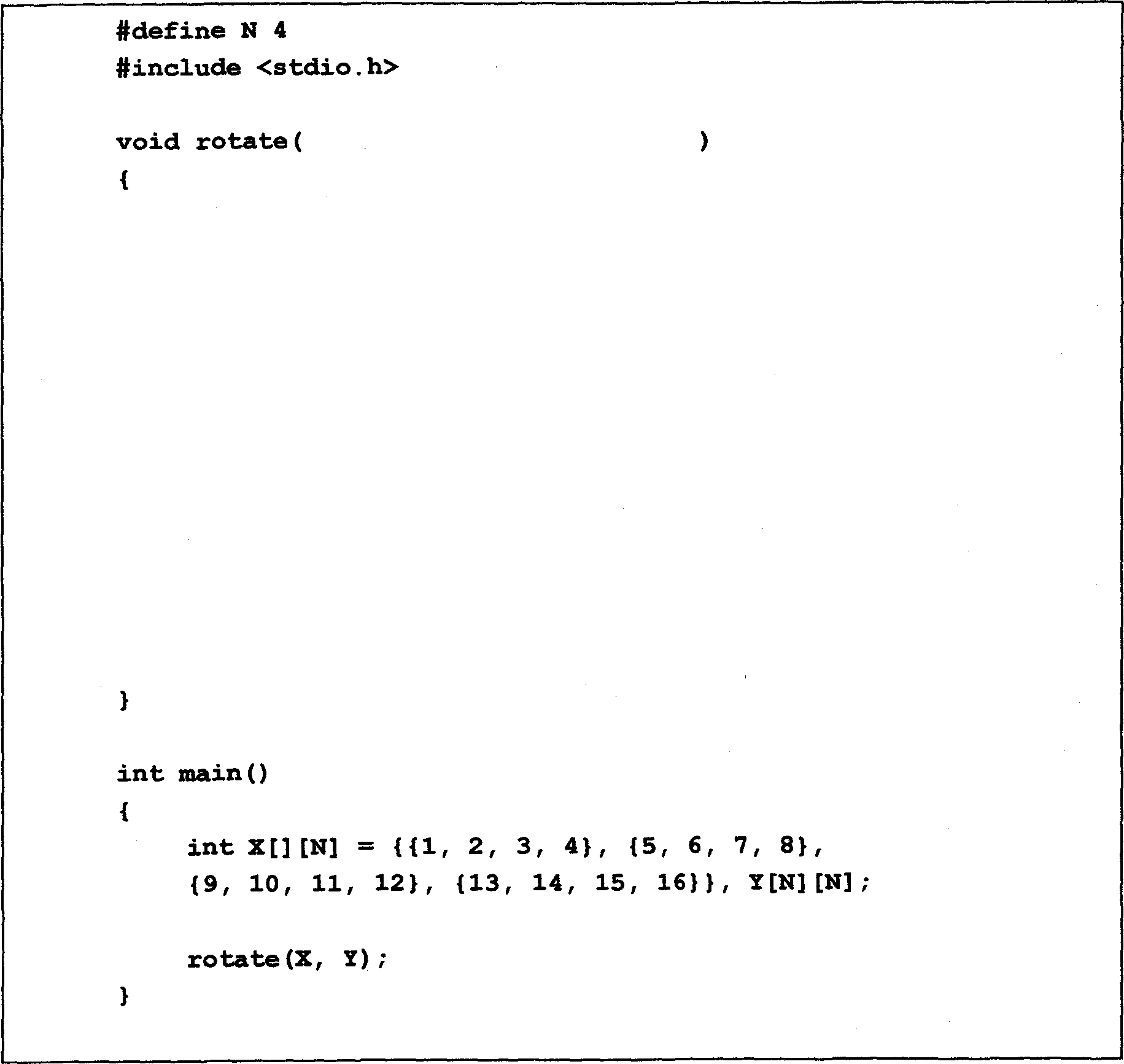
3. n integer data items are stored in a 1-D array. A pair of data a [i] and a [ j ] is called an inversion pair if i < j anda[i] > a[j],
A merge sort function can be modified to return the count of inversion pairs along with sorting. The following merge () function takes four parameters; a pointer x to the beginning of the data array, low-index 1, mid-index m, and the high-index h. The data from x[l] to x[m] and data from x[m+l] to x[h] are already sorted. The merge function merges them using the local array t [MAXNO] to get sorted data from x[1] to x[h] (where 0< I <m <h < maxno). The expression pi within the merge function is used to compute inversion pairs while merging two sorted parts.
int merge(int x[], int 1, int m, int h){ int t[MAXNO], i, j, k, invCount=0;
for(i=l; i<= h; ++i) t[i] = x[i];
i=l, j=m+l, k=l;
while(i <= m && j <= h)
if( t[i] <= t[j] ) x[k++] = t[i++] ; else {
Pi;
x[k++] = t[j++];
}
if (i > m)
for(; j <= h; ++j, ++k) x[k] = t[j];
else
for(; i <= m; ++i, ++k) x[k] = t[i]; return invCount;
}
[6 + 14 = 20 marks]
(a) What is the expression for Pi.
Pi:
(b) Write the function int mergeSort(int x[], int low, int high)
that uses the given function merge (), sorts the data and also returns the total count of inversion pairs in the input data. The input data is present in the array pointed by x [ ] and from the index low to the index high.
Ans 4(a):
|
(b) Convert the decimal number 1.23 to binary. Show the steps of the computation. |
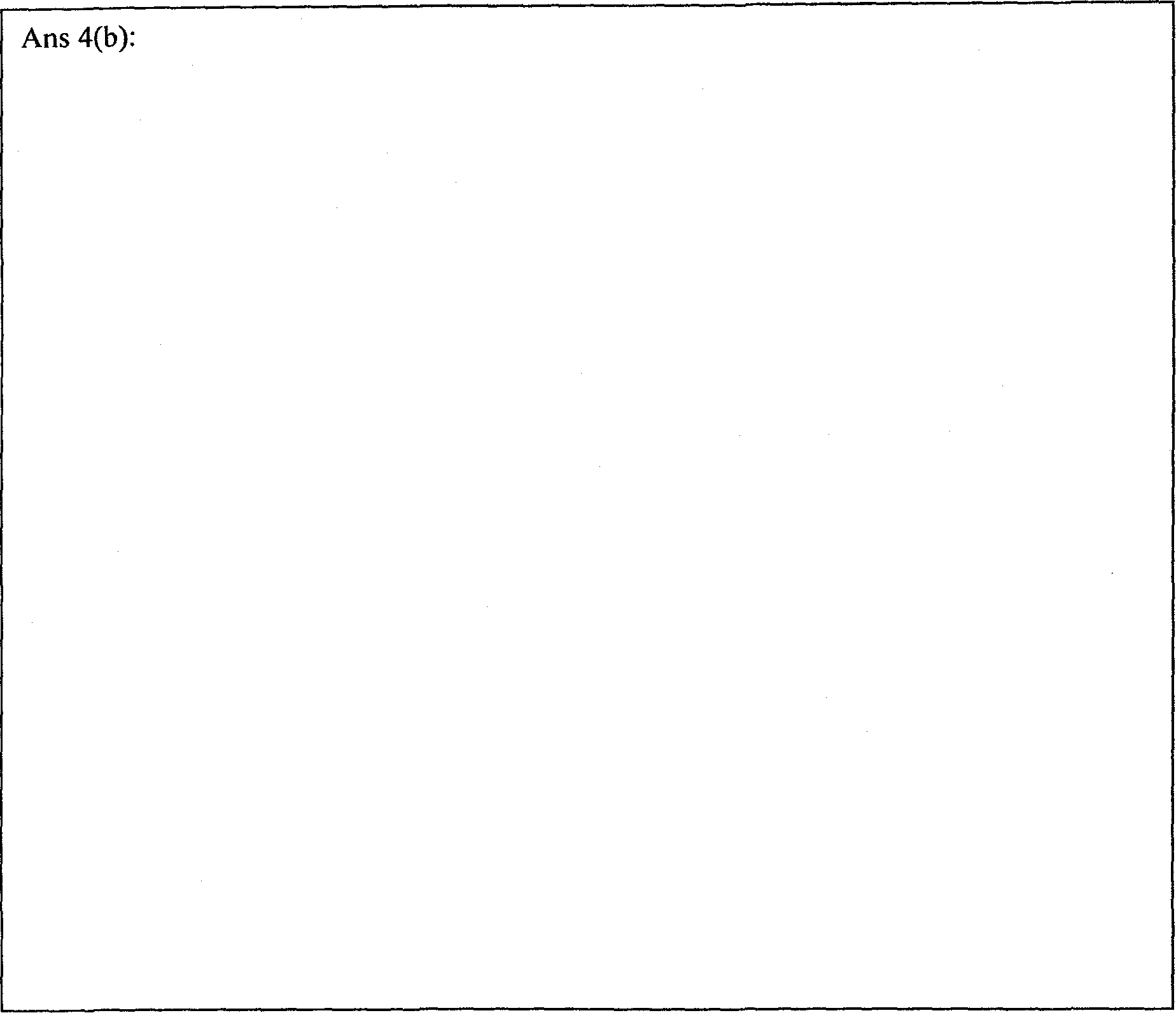 |
5. Consider the following inductive definition (recurrence relation) of a function on non-negative integers.
f(n) = n if n < 3
= 2f(n-2) + 3f(n-3) otherwise
A few values are:
|
n |
0 |
1 |
2 |
4 |
5 |
6 |
... | |
|
f(n) |
0 |
1 |
2 |
2 |
7 |
10 |
20 |
[6 + 7 + 7 = 20 marks]
|
(a) Write a recursive function int funR(int n) that directly encodes the definition to computes and returns the value of f(n) when n is passed as the parameter. |
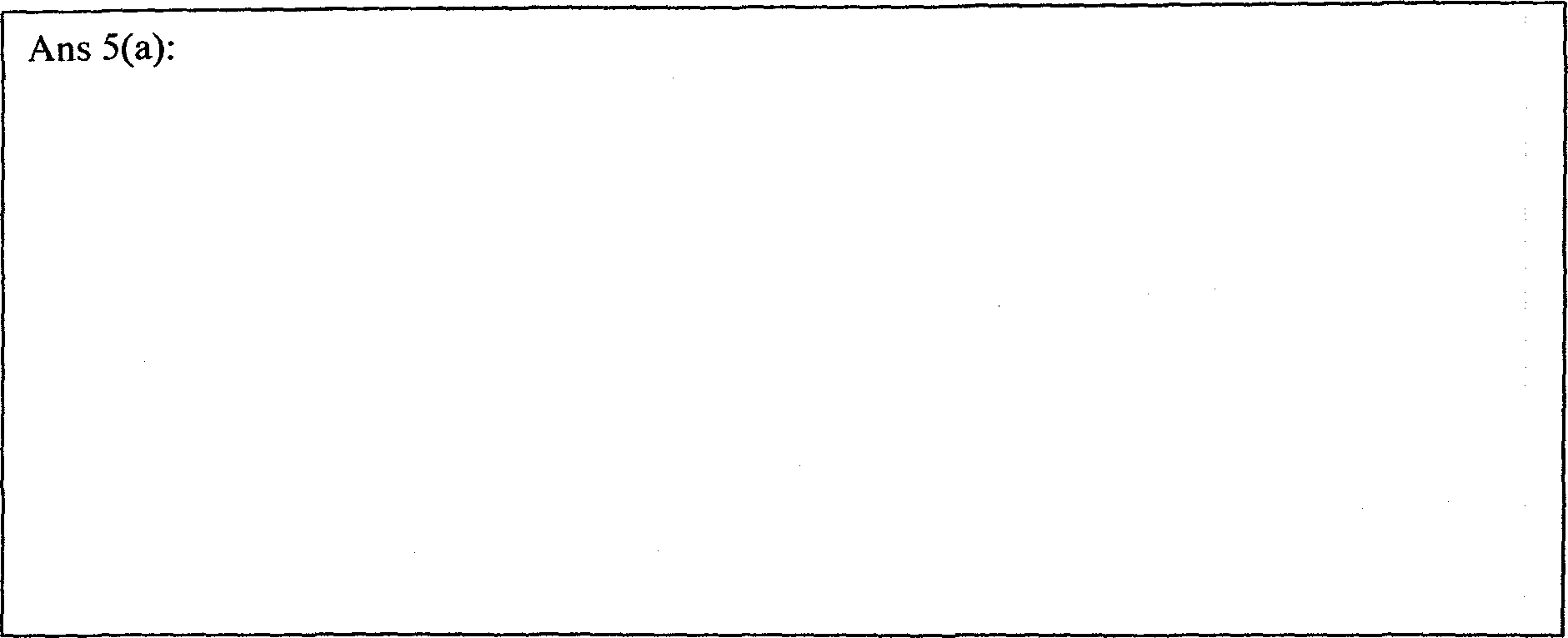 |
(b) Write an iterative function int funl (int n) that computes and returns the value off(n) when n is passed as the parameter.
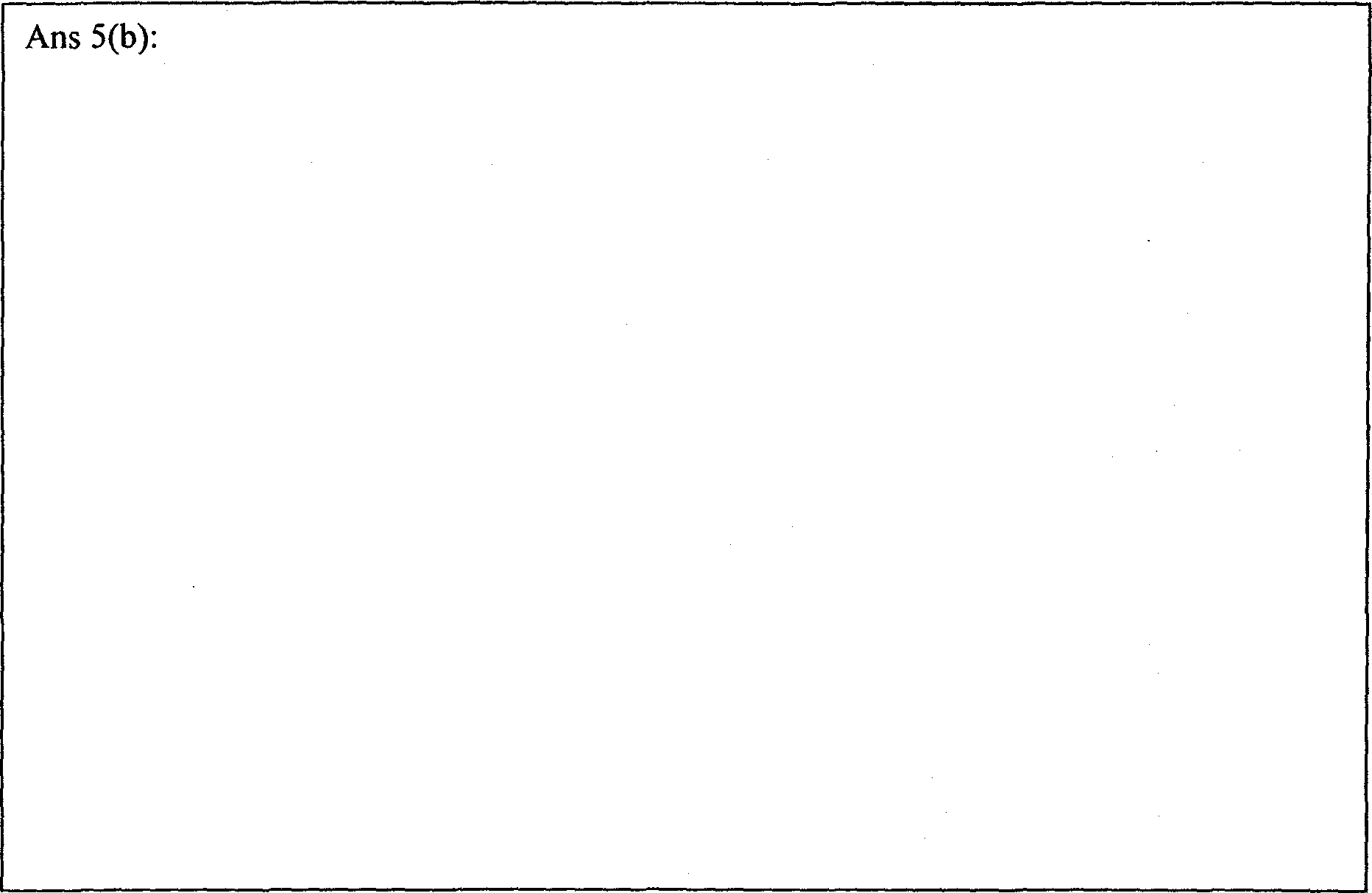
(c) The following recursive function (incomplete) computes (n) efficiently.
int funER (int n, int fO, int fl, int f2) { if(n < 2) return pi; if (n = 2) return P2; return funER (p3, fl, p4, p5);
>
Fill-in Pi, P2, P3, P4 and ps with appropriate expressions.
How will the function be invoked to compute f(15)?
ANS 5(c):
P2:_
P3:_
P4: _
To compute f(15), the function will be invoked as:
6. Consider the problem of representing a set (of integers) as a linked list. As per the definition of a set, it will consist of unique elements. The following structure definition is used to represent a node of the linked list:
struct setnode { int member; struct setnode *next;
>;
typedef struct setnode SET;
A set, represented by the linked list as mentioned above, can be accessed through a pointer pointing to the first node of the list.
(a) Write a C function to insert an element in a set at the end of the list provided it is not already in the set. The function will return a pointer to the first node of the set. The function prototype will be:
SET *insert_element (SET *myset, int element);
which will insert element into the set pointed to by myset.
(b) Write a C function to create a set. The function will read n integers, where n is a parameter, and then insert them one-by-one into the set using the function insert_element(). It will return a pointer to the first node of the set. The function prototype will be:
SET *read_set (int n);
(c) Write a C function to compute and return the intersection of two sets, with the following prototype:
SET intersect (SET *setA, SET *setB);
setA and setB are pointers to the first elements of the two given sets whose intersection is to be found out.
[8+4+8=20 Marks]
Ans 6(a):
Ans 6(b):
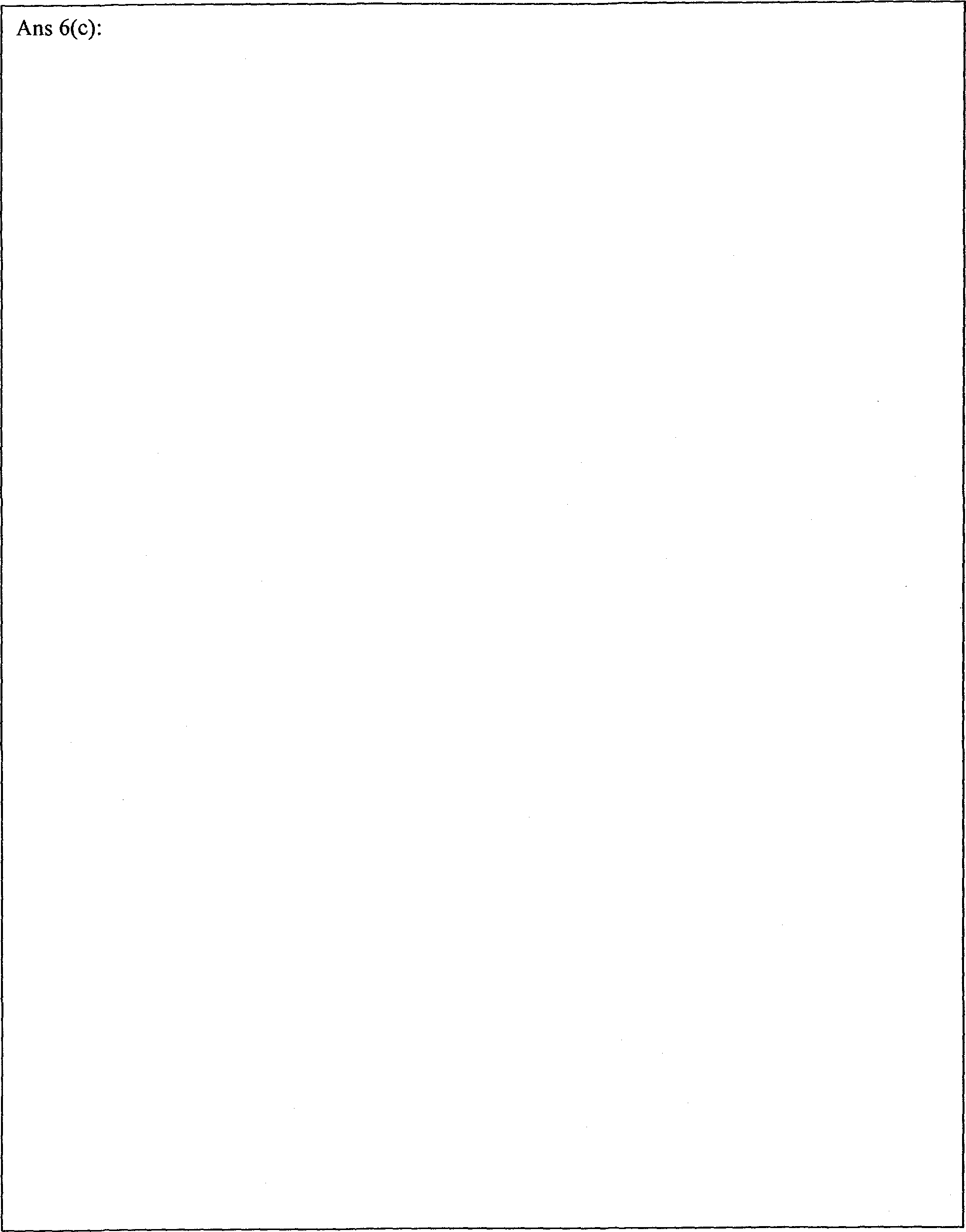
Page 15 of 15
|
Attachment: |
| Earning: Approval pending. |
